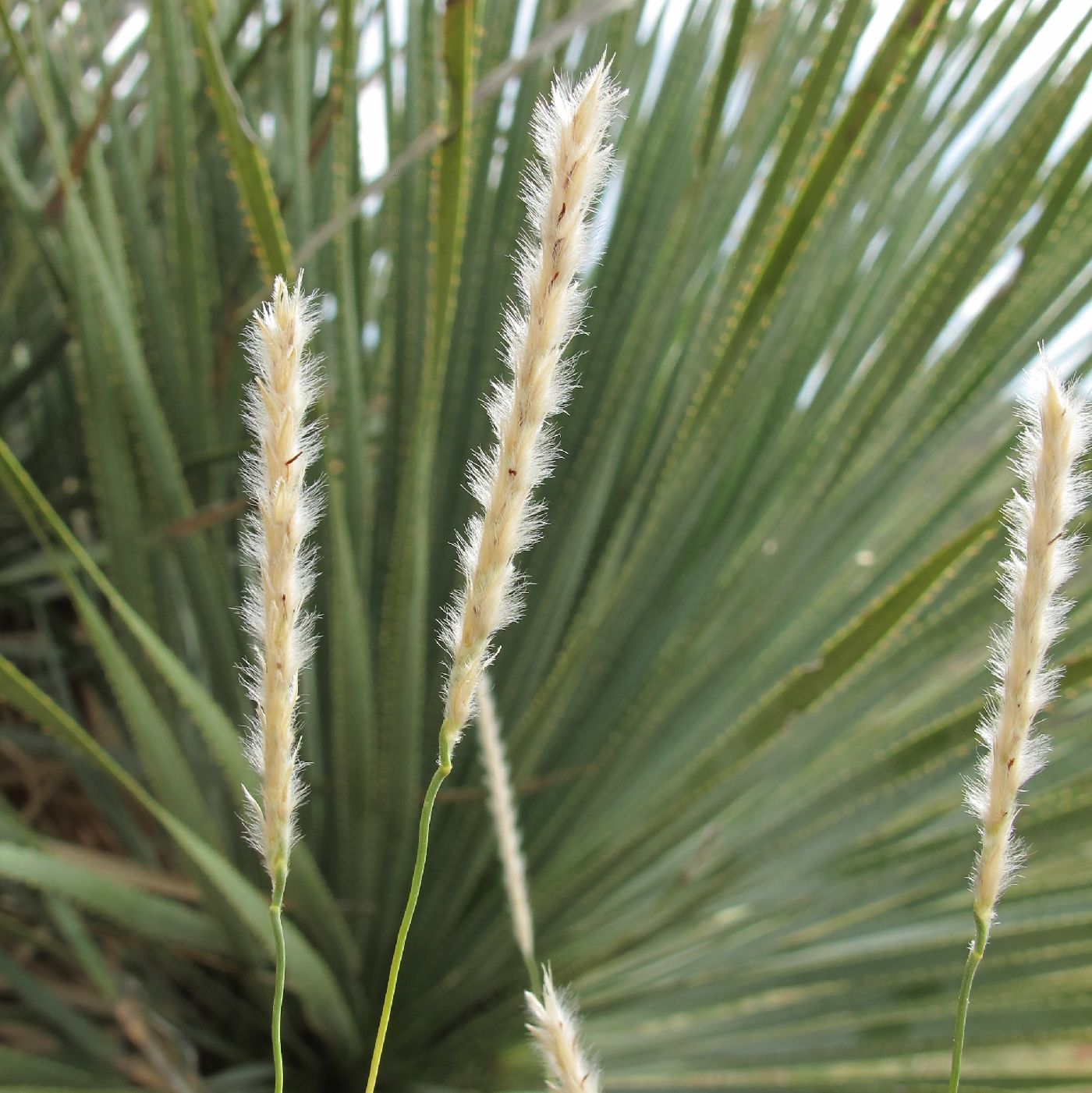Elionurus
|
Family: Poaceae |
Plants perennial, occasionally annual; cespitose, sometimes with short rhizomes. Culms 10-150 cm, erect, sometimes branching above the base. Leaves sometimes aromatic; sheaths without glandular pits; ligules shortly membranous and densely ciliate or of hairs; blades involute, flat, or folded. Inflorescences terminal, sometimes also axillary, composed of solitary, flexuous rames; rame internodes columnar to clavate, apices strongly oblique, not hollowed or rimmed; disarticulation in the rames, below the sessile spikelets. Spikelets in sessile-pedicellate pairs. Sessile spikelets dorsally compressed; calluses blunt, sometimes resembling a short pedicel; lower glumes enclosing the upper glumes, subcoriaceous, 2-keeled, keels prominently ciliate, intercarinal surface smooth, apices cuspidate to bilobed, rarely entire; lower florets reduced, sterile; upper florets bisexual, unawned. Pedicels stout, appressed but not fused to the rame axes, pubescent or ciliate on the angles. Pedicellate spikelets 3-8 mm, about equal to the sessile spikelets, staminate, muticous to awn-tipped. x = 5. Name from the Greek eluein, mouse, and oura, tail, alluding to the narrowly cylindrical inflorescence. |

